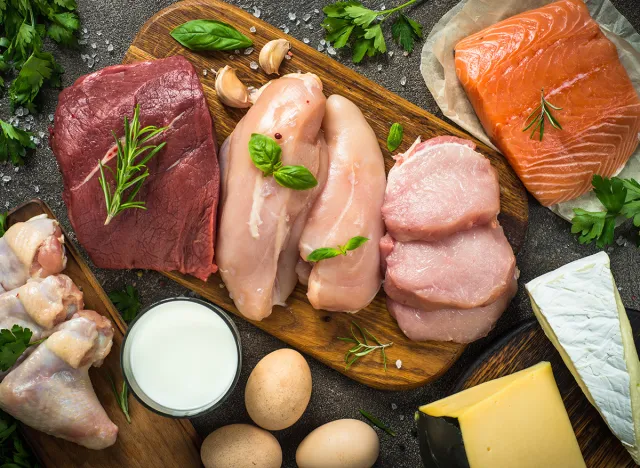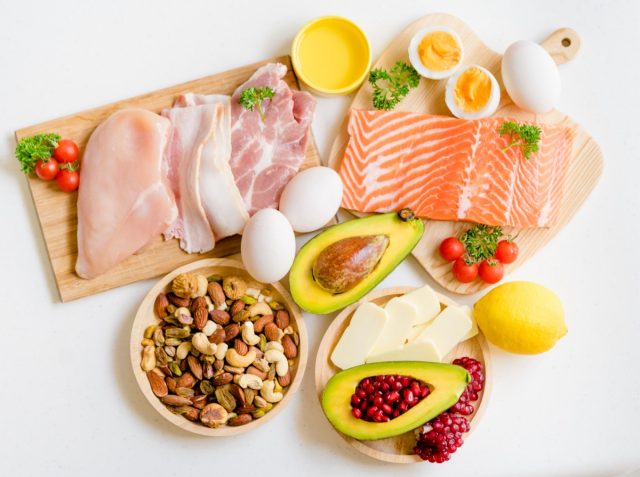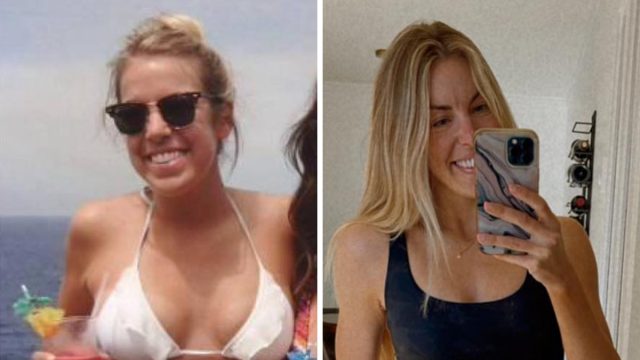10 High-Protein Hacks That Melt Fat Fast Without Feeling Hungry
Are you struggling to lose weight without constant hunger pangs? Protein might be the secret weapon you're missing. Dani Marenburg is a double-certified nutrition coach who has helped over 1,000 women achieve their weight loss goals. On her podcast Mindin' My Macros, Danny shares her top protein hacks that can help you melt fat fast while keeping you satisfied. Whether you're a protein novice or looking to optimize your intake, these tips will give you the edge in your weight loss journey.
Meet The Protein Queen
Danny introduces herself with a personal touch saying that she is "an ex-yo-yo dieting cardio junkie turned sustainable nutrition coach who's helped over 1000 women feel confident in their skin by learning how to eat for their goals without sacrificing a life well lived," she says in the podcast.
Danny's passion for protein is evident: "If you have been around the block with me, you know that I am the protein queen and my friends will agree because back in, what was it, 2022, I got married nearly all of my friends got married that year. So there were bachelorette parties, there were bridal showers, all of that. Everyone would laugh when I prioritized protein. Prioritize protein. And now that is apparently my slogan."
RELATED: I Lost 30 Pounds While Eating These High-Protein Foods
The Power of Protein for Fat Loss

Danny starts by explaining why protein is crucial for fat loss:
"There are four different main ways that protein can really help with you losing overall body fat," she says in the podcast. Let's break them down:
1. Boosting Satiety Hormones
"Number one is protein, which increases the secretion of our satiety hormone. This is GLP one, making us feel fuller with those protein meals," Danny explains. She adds, "This is the same hormone that's activated with ozempic with these weight loss medications."
2. Reducing Hunger Signals
She continues, "Number two is protein decreases the secretion of ghrelin, which is a hormone that signals to the brain that we are hungry. So it's kind of making this two-pronged approach where it's increasing the satiety hormone, and it's decreasing the hunger hormone, allowing us to feel fuller, more satisfied, more satiated throughout the day."
3. Increasing Calorie Burn
"Protein also has a greater thermic effect than carbs and fat," Danny points out. She elaborates, "Essentially, the thermic effect of food means that there is a thermic effect, meaning that there is a different amount of calories burnt through the digestive process based on what you're eating. So protein burns more calories through the digestive process than carbohydrates and fat do."
4. Regulating Blood Sugar
"Protein helps to regulate blood sugar levels," she says. "When we have regulated blood sugar levels, we're able to curb cravings and provide steady energy throughout the day. This also prevents us from grabbing less nutrient-dense snacks or nibbles that can really easily add up and pull someone into either a surplus or out of their deficit without even realizing it."
Real-Life Example
Danny shares a personal anecdote to illustrate the importance of protein:
"Yesterday actually, quick little story and side note, I had a consultation with somebody who won the Summer Reset Challenge, my group program, and I do these consultations, the winners, and she was like, oh, you know what? I feel really good in the morning, but then once I get home from work, I don't eat dinner until later because my boyfriend doesn't get home till late. We like to eat together. So that period of time after work before dinner, I find myself just snacking and eating," Danny recounts. She explains how increasing protein earlier in the day can help prevent this issue.
RELATED: Top 10-Minute Exercises That Will Tone Your Sagging Arms
Strategies to Boost Your Protein Intake

Now that we understand why protein is so important let's dive into Danny's hacks for increasing your protein intake:
1. Aim for 30 Grams Per Meal
"The first thing I recommend doing is really start by aiming for 30 grams of protein per meal," Danny advises. She adds, "Maybe this doesn't all add up to whatever your protein goal is, but it's a great place to start to get comfortable."
2. Pre-log Your Meals
Danny suggests, "Pre log your days and focus those days around your protein sources." She explains, "Pre logging is a technique that I talk about that essentially you're going into your food tracking app and you're planning out your day for maybe the next day."
3. Find Your Staple Proteins
"Find a few of their favorite staple proteins and then recycle them in multiple meals," she recommends. Danny shares a personal example: "For me, a great example of a stable protein is a ground turkey. I can use that to make a turkey burger. I can use that in my pasta to make a meaty pasta sauce. I can use that as a stir fry."
4. Increase Portion Sizes or Add Extra Sources
"Either increase the amount of a single serving of protein… or you can add in an additional protein source to your plate," Danny explains. She gives a personal example: "I love my Greek yogurt bowl. I absolutely love it, but sometimes it doesn't get me to my 30 to 40 grams of protein that I'm trying to aim for with my breakfast. And so what I'll do then is I will add in another protein source."
5. Use Supplements Wisely
"You can also supplement with things like powders, bars, shakes, but I do say do this more sparingly," she cautions. "It's a supplement for a reason. You want to supplement with those and be very cautious of the ingredients in them." As you increase your protein, you might worry about fat intake. Danny has some tips for that, too:
6. Choose Lean Cuts
"If you are eating meat, opt for a leaner cut of meat," Danny suggests. "So chicken breast first, chicken thighs, chicken breast is a much leaner cut, meaning it's lower in fat than chicken thighs."
7. Opt for Lower Fat Dairy
She adds, "There are also lower fat options that you can find. Like with Greek yogurts for example, there's a 0% or there's a 2%, there's a 5%."
8. Use Low-Fat Cheese as a Protein Booster
"You can find cheeses like there's fat-free fatted cheese. There's different types of cheeses that are going to be lower in fat that are going to add protein too," Danny points out.
9. Track Your Macros
Danny recommends using a food tracking app: "If you have the free version and pro tip, turn your phone horizontally. You'll be able to see your macros by food item and by meal."
10. Consistency is Key
Finally, Danny emphasizes the importance of consistency: "I guarantee you, you're going to see some immediate results from that alone." By implementing these protein hacks, you can supercharge your fat loss efforts without feeling deprived. Remember, as Danny says, "Protein is such an under consumed macronutrient and I just want more women to understand what their protein needs are."
Danny concludes with an encouraging message: "Use this information to your advantage. I'm always here to support you. If you have any questions, if you want to chat further, feel free to DM me over on Instagram at minded my macros. I am always there and I look forward to catching you in next week's episode. Until then, keep mind in your wellness." And if you enjoyed this article, take advantage of these 15 Quick Ways to Lose Body Fat Percentage in a Week.





